La Brea Tar Pits are home to the world’s largest collection of ice age fossils, with over 3.5 million fossil bones.
For me, it was a huge surprise. Not only that it existed, but that tar still bubbled from the ground in spots within the center of a city as overdeveloped as Los Angeles. In fact, they are the world’s only Ice Age fossil site being actively excavated in an urban location.
Located in the Rancho La Brea area of LA, they are a window into Los Angeles 25,000 years ago.
With both an indoor museum and outdoor excavation sites, there is plenty to see.
Outdoors, we observed early excavation pits, scientists and volunteers at active dig sites, and a recreation of a mammoth becoming trapped in “tar”.
Once inside the Page museum, we found reconstructed skeletons, loads of historical information, and an opportunity to watch paleontologists at work in their fossil lab.
La Brea Tar Pits is one of the more fascinating sites we have seen.
The tar pits
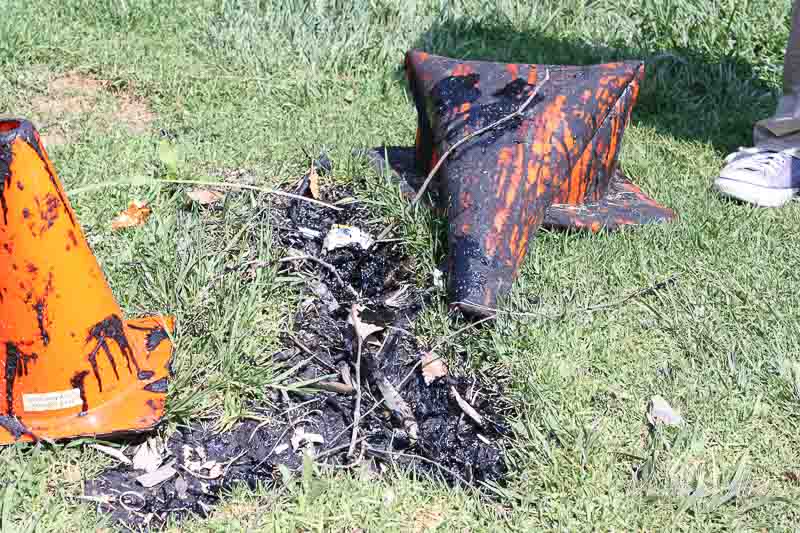
The pits are not actually tar, but rather the crude oil which seeps through the ground and mixes with sediment, creating asphalt.
You will notice several of them are bubbling. This is escaping methane gas.
Reserve your entry ticket here.
A brief history of La Brea Tar Pits
The story unfolded a bit like an action-adventure set between 60,000 and 11,000 years ago, as ice age herbivores and their predators became trapped at La Brea.
Here’s my memory of the graphic anecdote told by our guide:
Imagine you are walking along the former streets of Los Angeles, and suddenly you are immobile, unable to walk. You look down, and your feet have sunk only 5 inches into the asphalt.
You are not just a little stuck, but rather completely unable to free yourself.
As you struggle, terrified, you suddenly feel the huge teeth of a sabre tooth cat as it ends your suffering.
Early excavation and initial discovery continued from 1907 until the rights to excavate the land were gifted to the National History Museum.
Elephants escaped from the zoo in 1929. As they walked through the pits, they got stuck even though only five inches of their legs were submerged. This aided paleontologists’ understanding of how so many animals had ended up preserved here.
La Brea Tar Pits – Pit 91
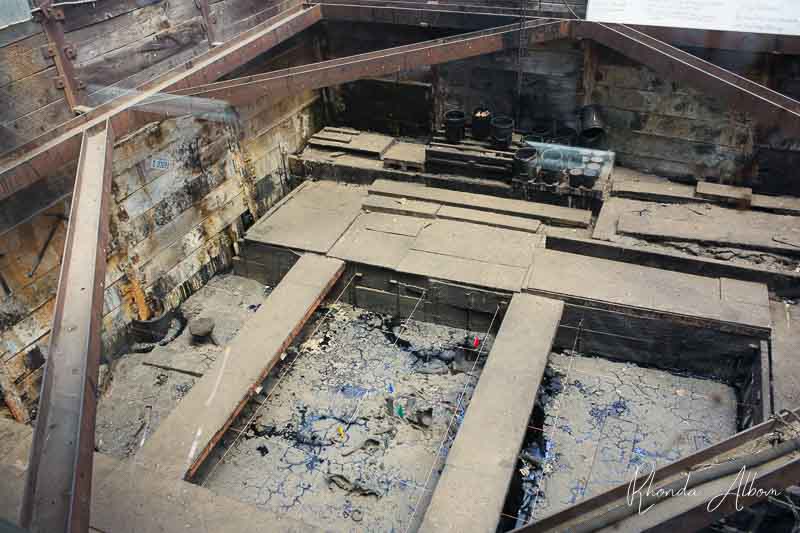
Once a shallow gooey pool, excavation started at Pit 91 in 1915, and scientists still dig here every summer. This open pit features colored markers, each representing different finds:
- Yellow – A dire wolf scapula
According to the signage, the dire wolf was Rancho La Brea’s most common large animal and was about the size of a grey wolf. Of the five species of the Canidae (dog) family once found here, the dire wolf is the only one that is extinct. - Purple (pelvis) and green (femur) from Sabertooth cat
Similar in size to an African lion with a shorter tail, this robust animal used its stealth to ambush rather than its speed to hunt. - Red – Harlan’s ground sloth pelvis
The largest of the three species of ground sloths found at Rancho La Brea, Harlan’s ground sloth was the most common. It is believed that their dermal ossicles (pebble-sized skin bones) functioned as protection from predators. - Blue – Western horse radius
The western horse was the larger of the two species, and both are extinct.
La Brea Tar Pits – Project 23
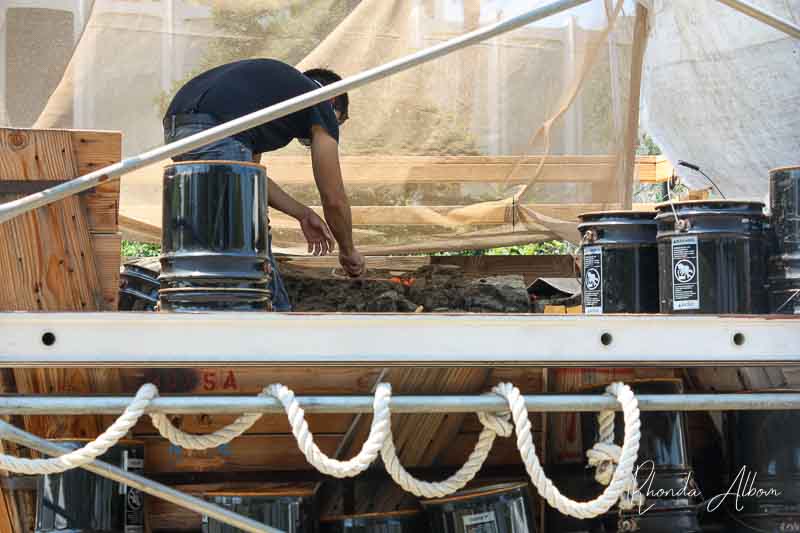
Here is a chance to watch scientists and volunteers excavating actual fossils. To date, they have discovered over a million fossils here, so chances are good they will find something new while you watch.
These discoveries have ranged from as small as mouse toes to as large as mammoth tusks.
How Project 23 got its name
It’s not what you would think, as in it’s not their 23rd project.
During excavation for the Museum of Art’s underground parking garage in 2006 an impressive number of new fossil deposits were discovered, including a near-complete skeleton of an adult mammoth.
Scientists packed the deposits in 23 large wooden boxes. Next, they were moved to La Brea Tar Pits, where we see them today.
La Brea Tar Pits – Observation Pit
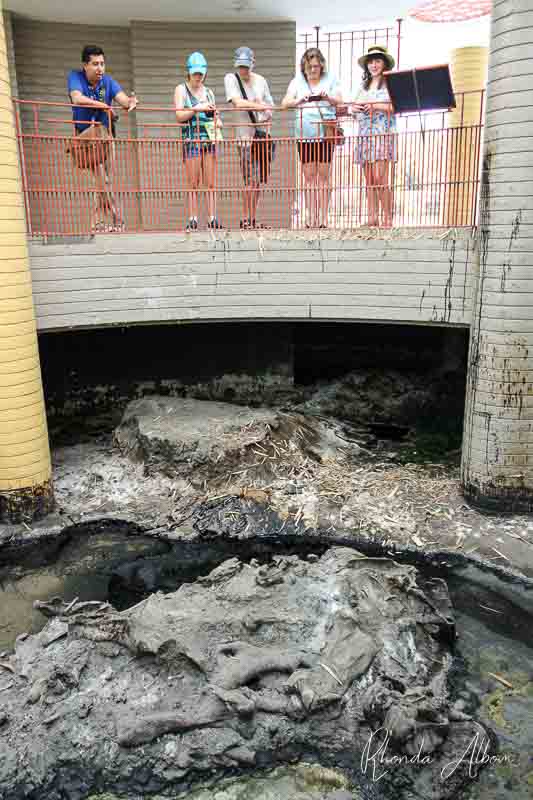
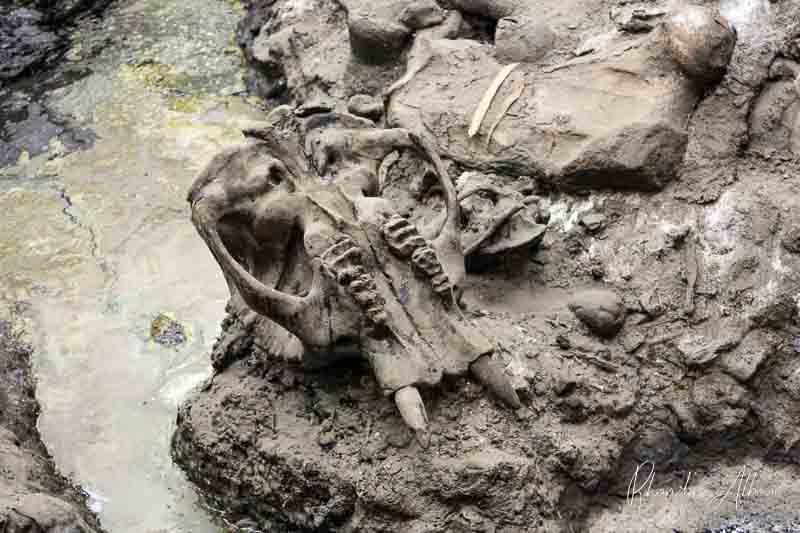
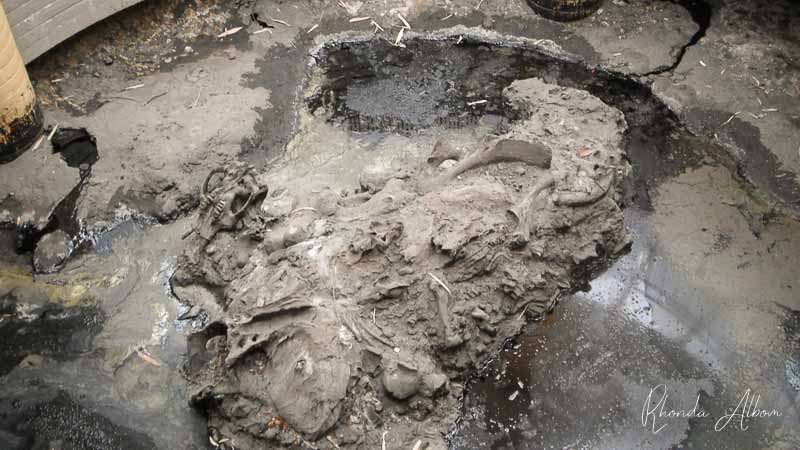
Here we found an open pit with an elevated viewing platform allowing us to observe one of the excavation pits.
It is the original museum here, first open in 1952. The idea was to give the public a feel for what it’s like to enter a fossil pit.
Jeff remembers coming here as a child.
George C Page Museum
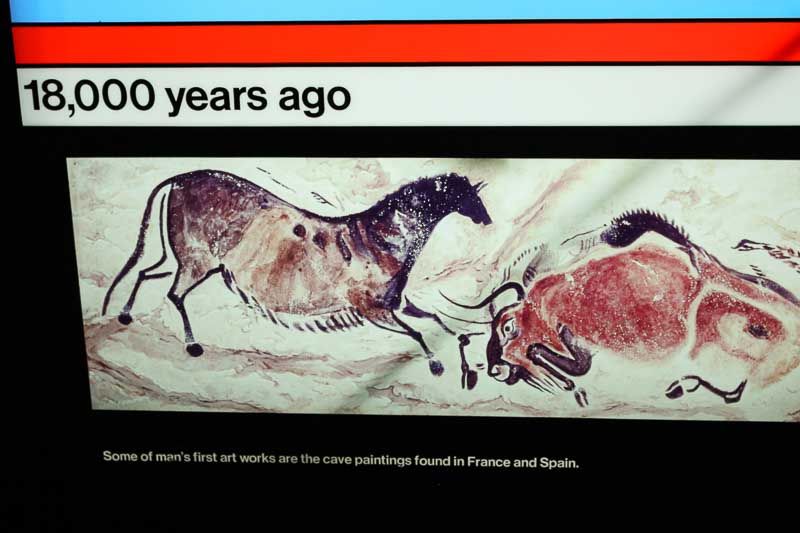
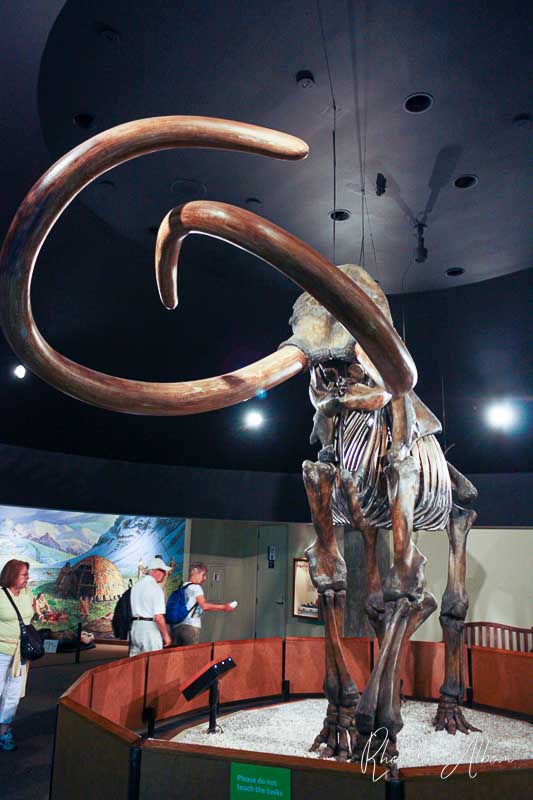
After we explored all of the outdoor pits, we ventured inside the George C Page Museum.
Here we saw the excavated animal bones put back together like a puzzle. Imagine building this woolly mammoth.
The museum showcases skeletons, fossils, and some of the best animal and plant life discovered here.
It also highlights other findings around the world, like the oldest cave drawings discovered in France and Spain.
We have since been inside the cave in Northern Spain that is now believed to feature the oldest cave drawings discovered to date.
Observing the paleontologists at work
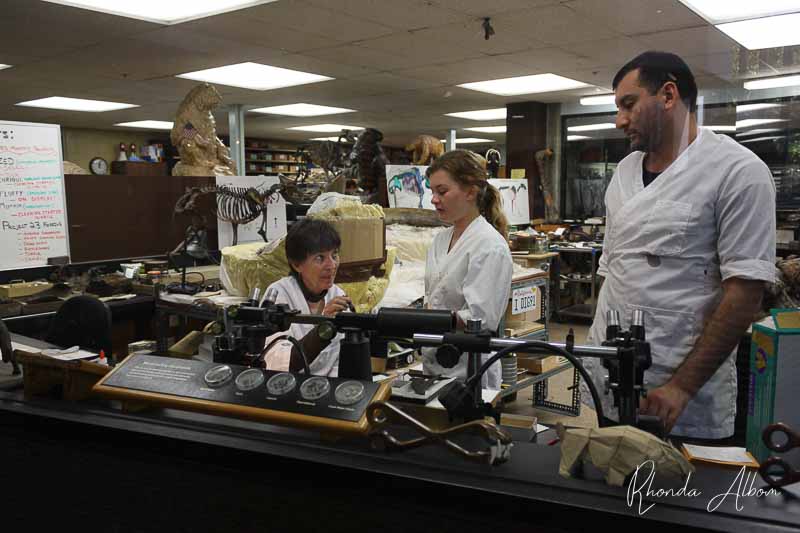
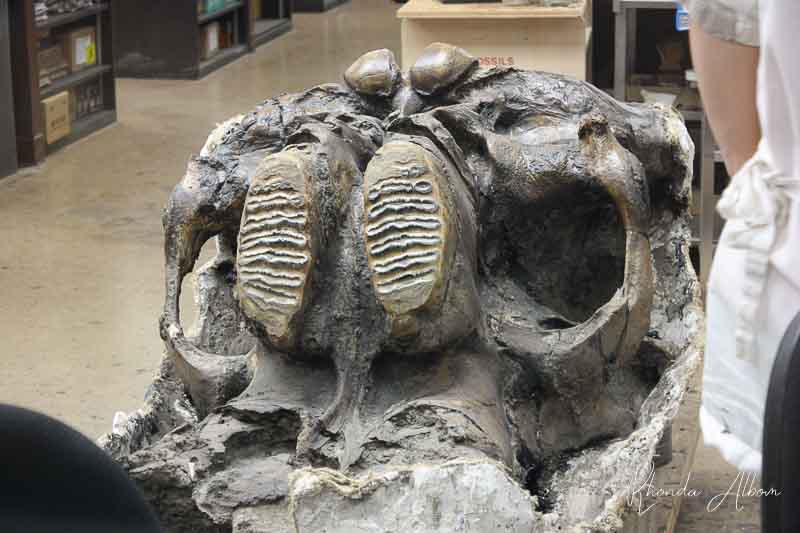
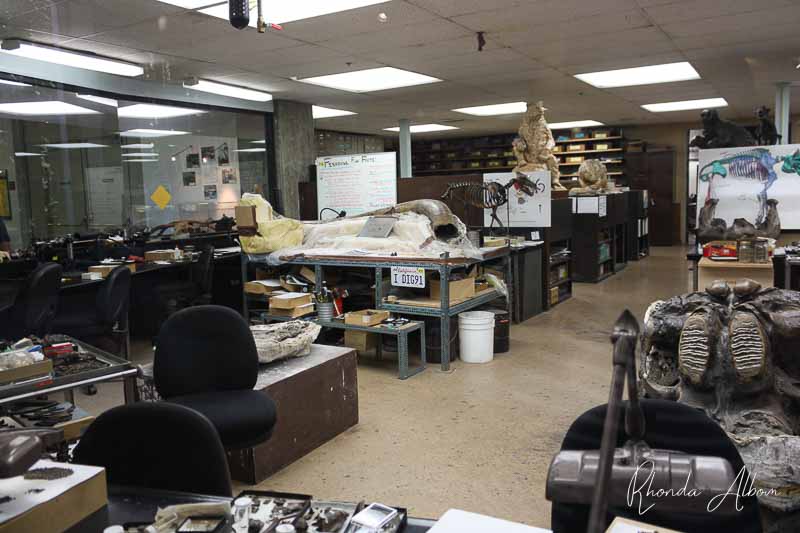
Toward the back of the museum are the paleontologists’ labs and offices. Rather than being behind closed doors like in so many museums, they are behind a huge glass window.
As a result, we can watch them at work as if looking into a giant fishbowl.
Tips for visiting La Brea Tar Pits and the Page Museum
- The Page Museum (and the La Brea Tar Pits) are located at 5801 Wilshire Boulevard, in the heart of Los Angeles.
- Save time by reserving your entry ticket in advance here.
- It is open daily from 9:30am to 5pm (closed on some holidays and on the first Tuesday of every month), and the last entry is at 4pm.
- Upon arrival, book your time for the free Excavator Tour, as tours are timed, and space is limited.
- If you are not staying in the heart of LA, allow extra time to get here to account for traffic. Also, note there is a parking lot, with an additional fee. See more on parking here.
- Plan to spend a couple of hours here.
Final thoughts on the La Brea Tar Pits
Honestly, La Brea Tar Pits turned out to be one of the most fascinating places we visited in Los Angeles, and this is a big statement for a city with Hollywood, Disneyland, and Warner Bros.
Have you been to the La Brea Tar Pits?
Disclaimer: As media guests of La Brea Tar Pits, we were given a private tour. However, the opinions expressed here are strictly my own.

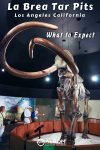
Nancy
I’ve read about these but am so glad you shared the photos. It’s hard to visualize!
stevebethere
I couldn’t help but laugh at the name and the fart remark heheh! enjoyed the photos Rhonda
Leonard
It sounds interesting. I’ve never been there before but I’ll check it out next time I’m in LA with my boys.
Pete
I’ve been to the tar pits and I’ve had a tour. It’s totally amazing.
Julie
It’s amazing what happened to the elephants in 1929. Thanks for sharing this Rhonda, as I know my family would also enjoy going there.
Lynne
I’ve heard of the tar pits – unfortunately not before my visit to LA years ago. It sounds like a fascinating place. Hopefully I’ll return to LA one day so I can see it for myself
Hilary
Hi Rhonda .. so pleased hubby’s memories and suggestion to go back – brought such pleasure .. and definitely if I ever get to LA – I’ll visit the tar pits – sound so interesting ..
This journey looks so much fun … cheers Hilary
Donna
We have been here before too. It is as cool as you describe it. LOL – funny that your hubby remembers it.
Miss Lemon
Forgive my earlier comment, I spoke rashly, from jealousy. In fact, please delete it and allow me to say That I’ve been enjoying ALL of your travels.
Miss Lemon
How wonderful to see the tar pits first hand!
Sharon
What a great find! We are passing through LA in August. I’ll bet my family would love this place. We will have to check it out. Thanks Rhonda.
Comedy Plus
I’ve been to L.A. many times but never been there. I aim to get out of L.A. as fast as I can. Been all over San Diego, but not much in L.A.
Have a terrific day. 🙂
Alex J. Cavanaugh
I’ve been to LA, but we didn’t stop to see the Tar Pits. That’s cool you got to see the old section. And I always wondered how so many creatures got stuck as well.